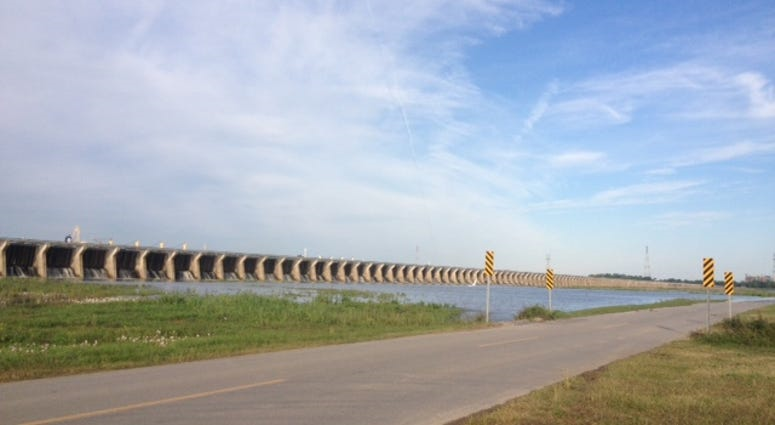
For the third consecutive year, the Bonnet Carre Spillway will open.
However, unlike in past years, you will not be allowed to go out and see it.
Coronavirus fears and social distancing mandates from local and state-level governments are forbidding people gathering to watch cranes pull pins and see Mississippi River water pour into Lake Pontchartrain.
In the past as many as 3,000 gathered to see the event.
The decision to open the spillway came after an on-line stakeholder meeting between the U.S. Army Corps of Engineers and representatives from Louisiana and Mississippi and the local levee districts in the region.
The announcement was made by Lieutenant Colonel Steven Murphy, New Orleans District Commander:
“I have recommended to Major General Mark Toy to operate the Bonnet Carre Spillway when the operational trigger of 1.25-million cubic feet per second and rising is met.”
The move will involve an initial 30-day opening of the diversion system utilizing 95-to-105 bays.
The opening of the bays will take approximately two hours as they get underway around 10 am.
Lt. Col. Murphy says the Corps has been involved in a flood fight for more than 80-days.
“Out of this 87-day flood fight, we have been in Phase II, where the river has been at 15-feet at the Carrollton [river level] Gauge for the last 51-days.”
The opening of the Spillway is not without the memories of last year when, “We spent 292 days, at least 9-and-a-half months in Phase I flood fight,” according to Murphy. “Which means the river was at least 11-feet at the Carrollton Gauge. This year appears to have the same potential.”
Last year’s flood fight was against a Mississippi River that ran at its highest amount of water since the Great Flood of 1927, the disaster that inspired the construction of the Bonnet Carre Spillway paralleling the Bonnet Carre Crevasse, a natural weir that siphoned off the water that overran the bank of the Mississippi and flowed uncontrolled to Lake Ponchartrain.
Last year’s dual opening saw an unprecedented amount of fresh, albeit polluted, water flows into Lake Ponchartrain.
The water, laden with fertilizer from farms upstream as far as Montana, produced algae blooms on Lake Ponchartrain and greatly affected the waters of the Gulf Coast.
Shellfish were killed and oyster beds were rendered useless for a projected three years as the water fights to rebalance itself to a brackish state in Ponchartrain and return to salinity in the Gulf.
But the decision was not made lightly.
Murphy says he consulted with levee districts who are watching the earthen berms as water rushes by, high up near the top.
“The local levee districts have boots on the ground, inspecting every mile of the levee system,” Murphy explains. “Their proactive posture and rapid response is critical to assure that any areas of concern can be addressed before they become problems.”
The spillway will operate for an initial 30-day period. Any extensions of the opening will be made at a later date.
